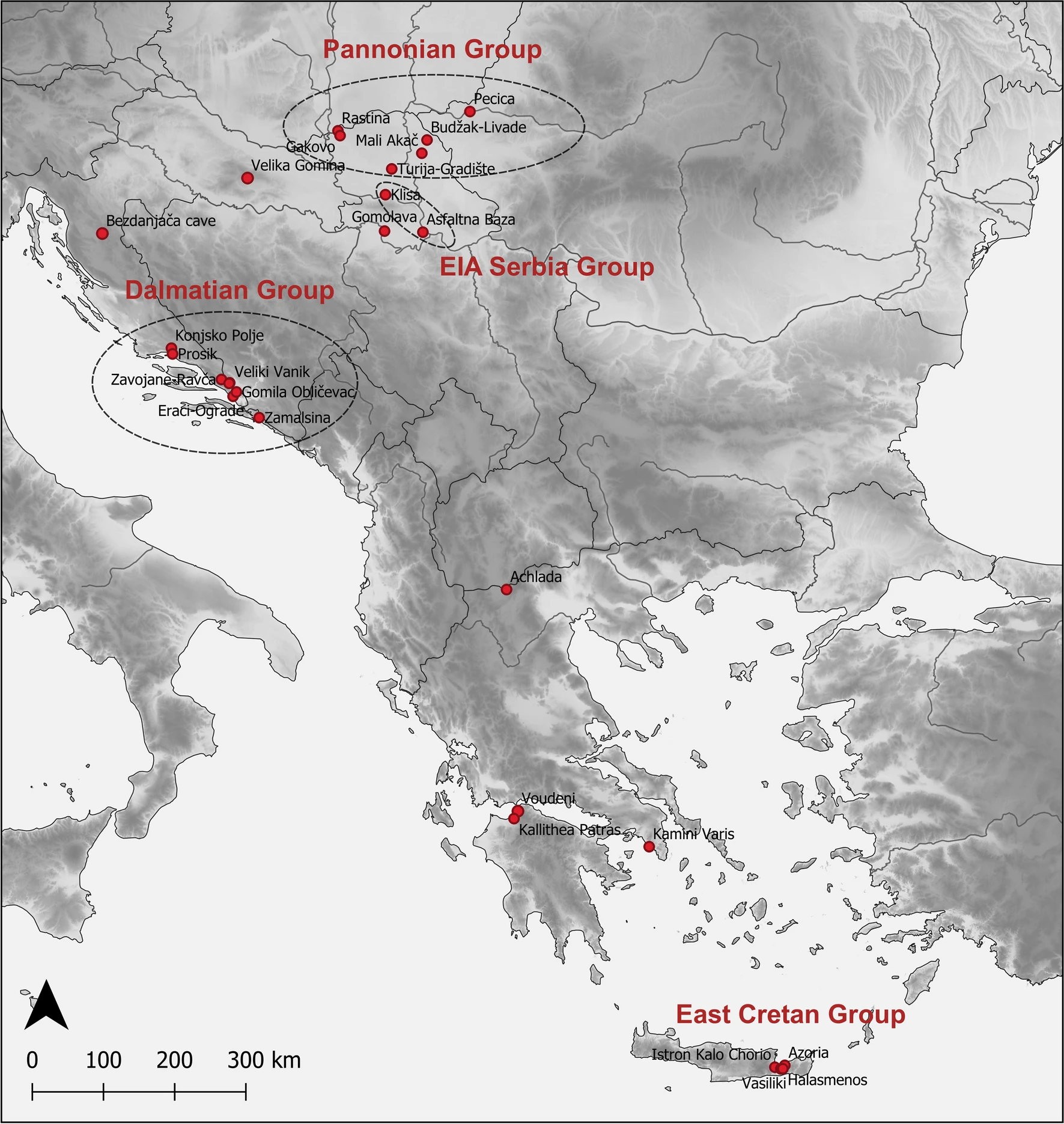PaleoRevenge
Regular Member
- Messages
- 962
- Reaction score
- 680
- Points
- 93
The present study aims to explore connectivity and networking in Late Bronze Age (LBA)/Early Iron Age (EIA) Greece and the Balkans using morphological biodistance analysis and test the potentiality of newly introduced statistical tests, which were designed for challenging datasets, in this particular cultural area. Cranial non-metric traits were recorded in ten skeletal collections, spanning from East Crete to Romania. We followed an experimental statistical approach encompassing two different measures of divergence, the conventional and well-tested mean measure of divergence (MMD) and the newly introduced untransformed measure of divergence (UMD). Though different, results based on these two measures are mutually supporting and show that biodistances in our regional case studies mainly follow the isolation by distance model. This cautiously confirms our main hypothesis that during the LBA and EIA periods in Greece and the Balkans, personal mobility was a slow process characterized by integration, rather than displacement or transformation. The current study is the first one to infer biological affinities using cranial non-metric analysis combined with artifactual evidence, in LBA/EIA Greece and the Balkans. Building a larger dataset through future non-metric analyses will better enable exploring networking and mobility to further complement ongoing bioarchaeological, genetic, and material culture studies.

Impending samples:


 link.springer.com
link.springer.com

Impending samples:


Exploring connectivity in Late Bronze Age/Early Iron Age Greece and the Balkans using cranial non-metric analysis - Archaeological and Anthropological Sciences
The present study aims to explore connectivity and networking in Late Bronze Age (LBA)/Early Iron Age (EIA) Greece and the Balkans using morphological biodistance analysis and test the potentiality of newly introduced statistical tests, which were designed for challenging datasets, in this...
Last edited:

